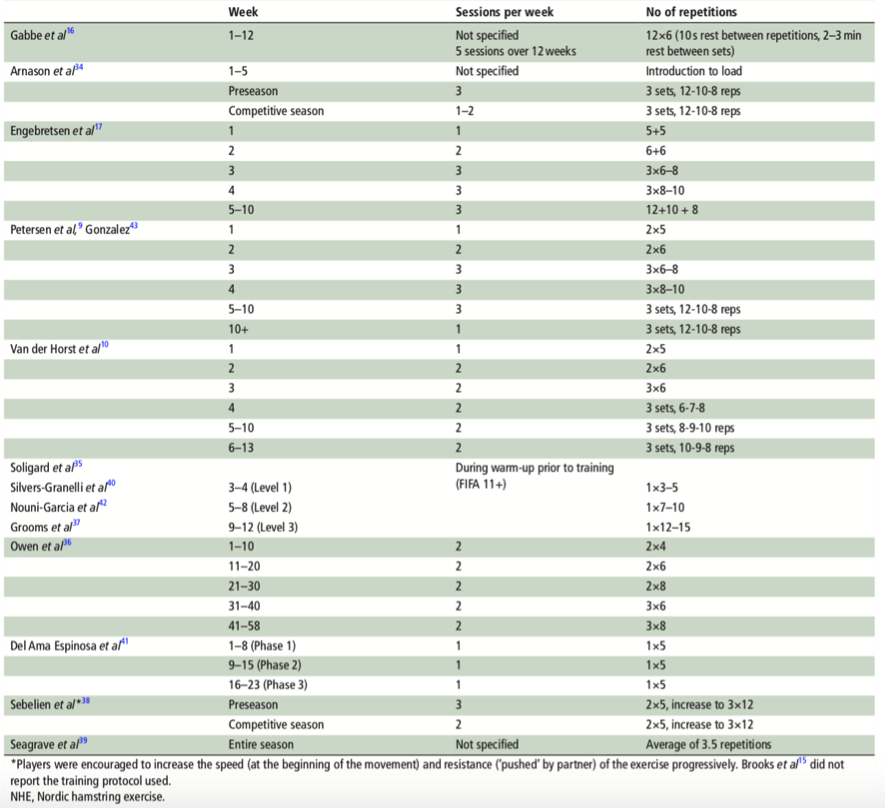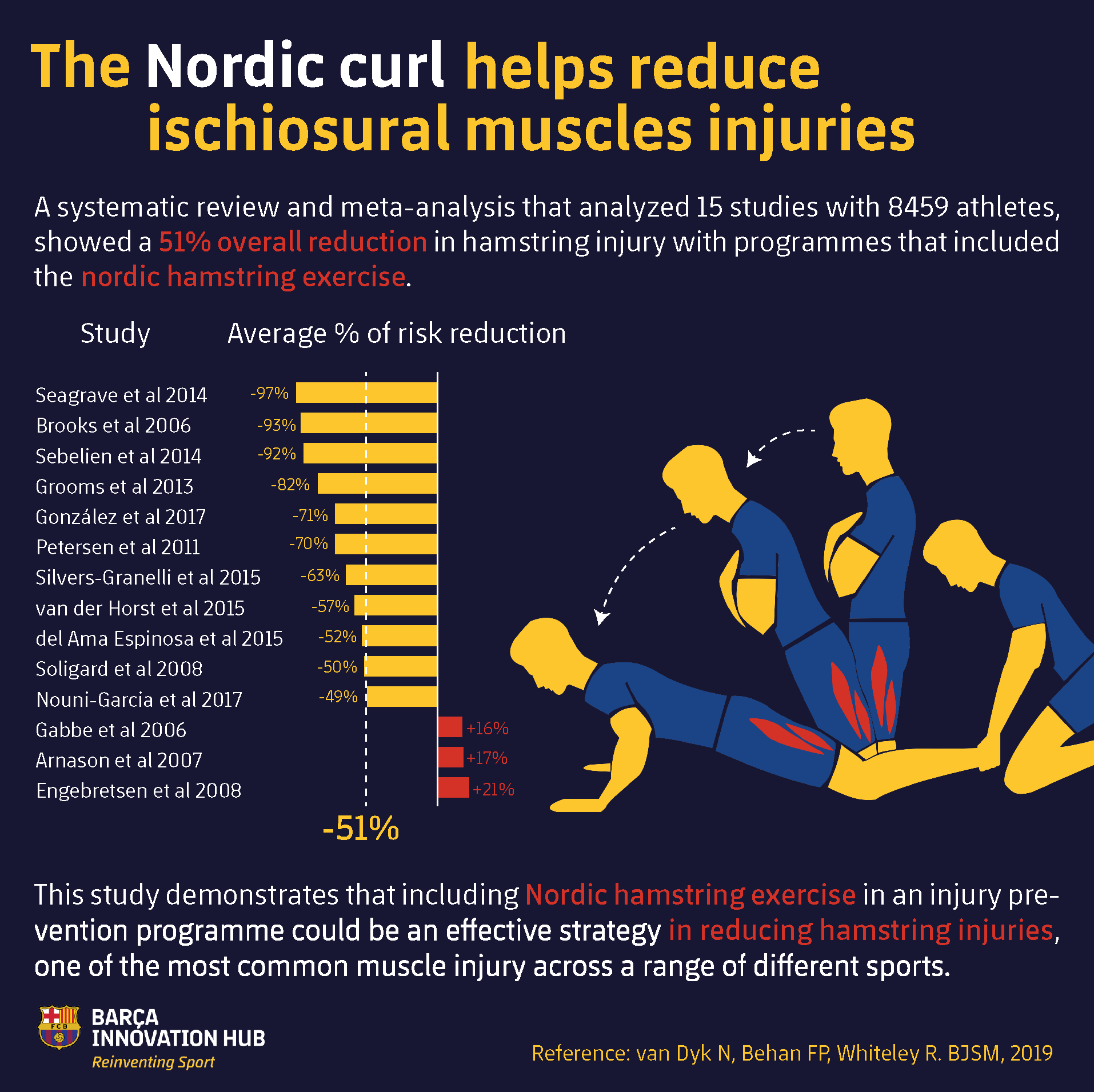March 17, 2020
Performance
Health and Wellness
A recent study suggests that the nordic hamstring exercise could help reduce ischiosural muscle injuries
The ischiosural muscles are one of the most common groups of muscles to get injured, especially in sports which involve changes of direction and speed (Bahr, Clarsen, & Ekstrand, 2018; Hägglund, Waldén, & Ekstrand, 2005). The incidence of this kind of injury in professional football has increased annually by 4% since 2001 (Ekstrand, Waldén, & Hägglund, 2016). Therefore, medical staff, coaches and trainers try to develop prevention programs which aim to reduce its incidence. An exercise very much used in these programs is the Nordic curl (NHE).
Recently, a study (van Dyk, Behan, & Whiteley, 2019) published in the British Journal of Sports Medicine has analyzed whether including this exercise in a prevention program really reduces the injury rate in the ischiosural muscles. After evaluating 15 studies, 8459 athletes and 525 injuries, the analysis showed that including the NHE reduces up to 51% the risk of injury.

Based on such beneficial results and considering the high eccentric component of this exercise, one of the objectives of the S&C coaches and sports therapists, should be developing an adequate progression of the exercise (see Table) according to the player’s level and the context of the season. To sum up, the NHE within a prevention program adjusted to the athlete’s level could significantly reduce the injury rate in the ischiosural muscles.

Adrián Castillo
References
Bahr, R., Clarsen, B., & Ekstrand, J. (2018). Why we should focus on the burden of injuries and illnesses, not just their incidence. British Journal of Sports Medicine, 52(16), 1018–1021. https://doi.org/10.1136/bjsports-2017-098160
Ekstrand, J., Waldén, M., & Hägglund, M. (2016). Hamstring injuries have increased by 4% annually in men’s professional football, since 2001: a 13-year longitudinal analysis of the UEFA Elite Club injury study. British Journal of Sports Medicine, 50(12), 731–737. https://doi.org/10.1136/bjsports-2015-095359
Hägglund, M., Waldén, M., & Ekstrand, J. (2005). Injury incidence and distribution in elite football—a prospective study of the Danish and the Swedish top divisions. Scandinavian Journal of Medicine & Science in Sports, 15(1), 21–28. https://doi.org/10.1111/j.1600-0838.2004.00395.x
van Dyk, N., Behan, F. P., & Whiteley, R. (2019). Including the Nordic hamstring exercise in injury prevention programmes halves the rate of hamstring injuries: a systematic review and meta-analysis of 8459 athletes. British Journal of Sports Medicine, 53(21), 1362 LP – 1370. https://doi.org/10.1136/bjsports-2018-100045
KNOW MORE
CATEGORY: MARKETING, COMMUNICATION AND MANAGEMENT
This model looks to the future with the requirements and demands of a new era of stadiums, directed toward improving and fulfilling the experiences of fans and spectators, remembering “feeling” and “passion” when designing their business model.
CATEGORY: FOOTBALL SPORTS PERFORMANCE
Through the use of computer vision we can identify some shortcomings in the body orientation of players in different game situations.
CATEGORY: MEDICINE HEALTH AND WELLNESS
A health check must detect situations which, despite not showing obvious symptoms, may endanger athletes subject to the highest demands.
CATEGORY: FOOTBALL TEAM SPORTS
In the words of Johan Cruyff, “Players, in reality, have the ball for 3 minutes, on average. So, the most important thing is: what do you do during those 87 minutes when you do not have the ball? That is what determines whether you’re a good player or not.”
CATEGORY: MEDICINE HEALTH AND WELLNESS SPORTS PERFORMANCE
Muscle injuries account for more than 30% of all injuries in sports like soccer. Their significance is therefore enormous in terms of training sessions and lost game time.
DO YOU WANT TO KNOW MORE?
- SUBSCRIBE
- CONTACT
- APPLY
KEEP UP TO DATE WITH OUR NEWS
Do you have any questions about Barça Universitas?
- Startup
- Research Center
- Corporate